Showfoto/Levels Adjust/da: Difference between revisions
Created page with 'Du bemærker, at fotoet er ret mørkt. Det er taget under en præsentation, så rummet var nok ret mørkt; men det er ingen undskyldning for et dårligt foto [[Image:Face-smile.p...' |
Created page with 'Hvorfor er det mørkt? Lad os åbne fotoet i '''Showfoto''' ('''Digikam'''s redigeringsdel) og se, hvad der foregår:' |
||
| Line 15: | Line 15: | ||
Du bemærker, at fotoet er ret mørkt. Det er taget under en præsentation, så rummet var nok ret mørkt; men det er ingen undskyldning for et dårligt foto [[Image:Face-smile.png|12px]] | Du bemærker, at fotoet er ret mørkt. Det er taget under en præsentation, så rummet var nok ret mørkt; men det er ingen undskyldning for et dårligt foto [[Image:Face-smile.png|12px]] | ||
Hvorfor er det mørkt? Lad os åbne fotoet i '''Showfoto''' ('''Digikam'''s redigeringsdel) og se, hvad der foregår: | |||
{|class="tablecenter" style="border:1px solid darkgray;" | {|class="tablecenter" style="border:1px solid darkgray;" | ||
Revision as of 19:43, 24 September 2010
KDE fotointroduktion 1-1 Niveaujustering
Unai Garro (uga) - sommeren 2008
Dette er nok en af de mest almindeligt brugte metoder til at justere et billede. Den er så enkel og effektiv, at du nok vil bruge den på alle dine billeder fra nu af, så følg med og god fornøjelse.
Lad os se på dette eksempelbillede fra Akademy 2008, venligst doneret af Sebastian Kügler:
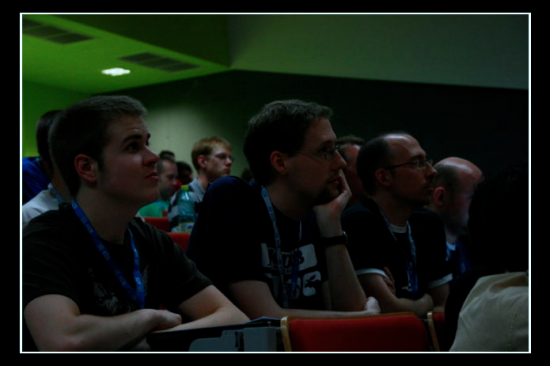
|
Du bemærker, at fotoet er ret mørkt. Det er taget under en præsentation, så rummet var nok ret mørkt; men det er ingen undskyldning for et dårligt foto ![]()
Hvorfor er det mørkt? Lad os åbne fotoet i Showfoto (Digikams redigeringsdel) og se, hvad der foregår:
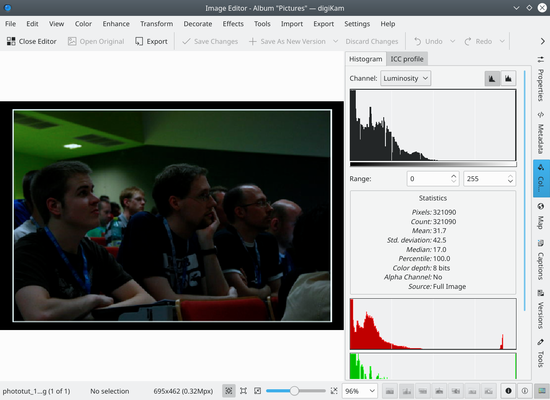
|
On the top right, you can see the image's histogram. (I have pushed the histogram button to see it more clearly). So "What's the histogram?", you'll, ask. The histogram is just a pixel count. It counts how many pixels there are for each gray level, and shows them in a graph. The left part of the histogram are dark/black colors, and the right part of the histogram are brightest colors.
You can see that our image has the histogram concentrated on the left part. Thus, it's mostly black. The right part of the histogram isn't used at all, as shown in the figure. Why did this happen? Just because the camera failed exposing the image properly, or was inappropriately configured.
If a photo is visually pleasing, usually (not always), it covers most of the histogram, from black, to white.
So, is there a way to fix this, then? Of course there is, and it's a very easy one. Select the menu :
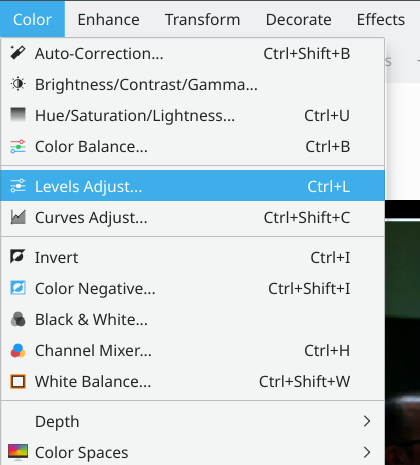
|
You will see a new popup showing a tool to adjust the histogram output. There are several parts in it. On the top right, there are two histograms. The first one is the output/new histogram, and the second (bottom) one is the input/original histogram.
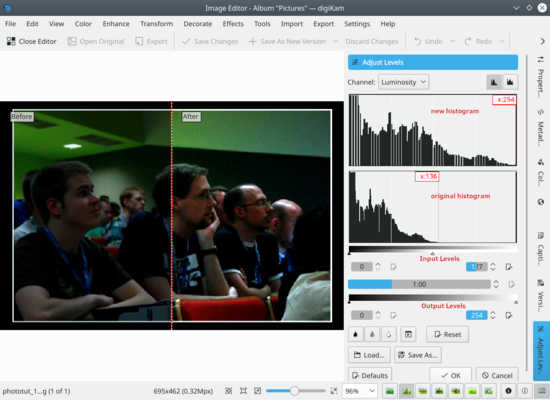
|
As you can see, I have adjusted the output histogram to cover it all, see? So how have I done this? Very simple:
There are 4 sliders in this tool. The first two sliders mark the beginning and end of the part of the histogram that I am interested in. I have moved them to match the full histogram of our original image.
The other two sliders mark the range of the histogram we want as output. We want the histogram to cover from black to white, so just move the sliders to the left corner and to the right corner.
Press , et voilà, your nice photo is fixed. Congrats ![]()
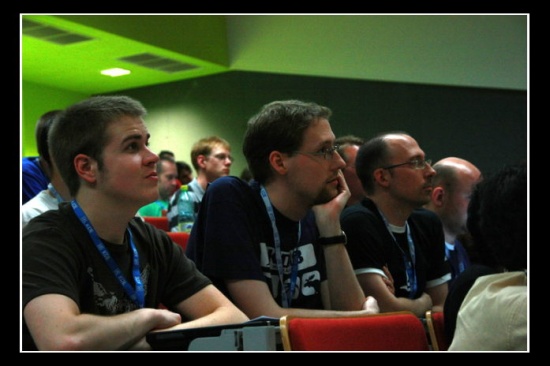
|

